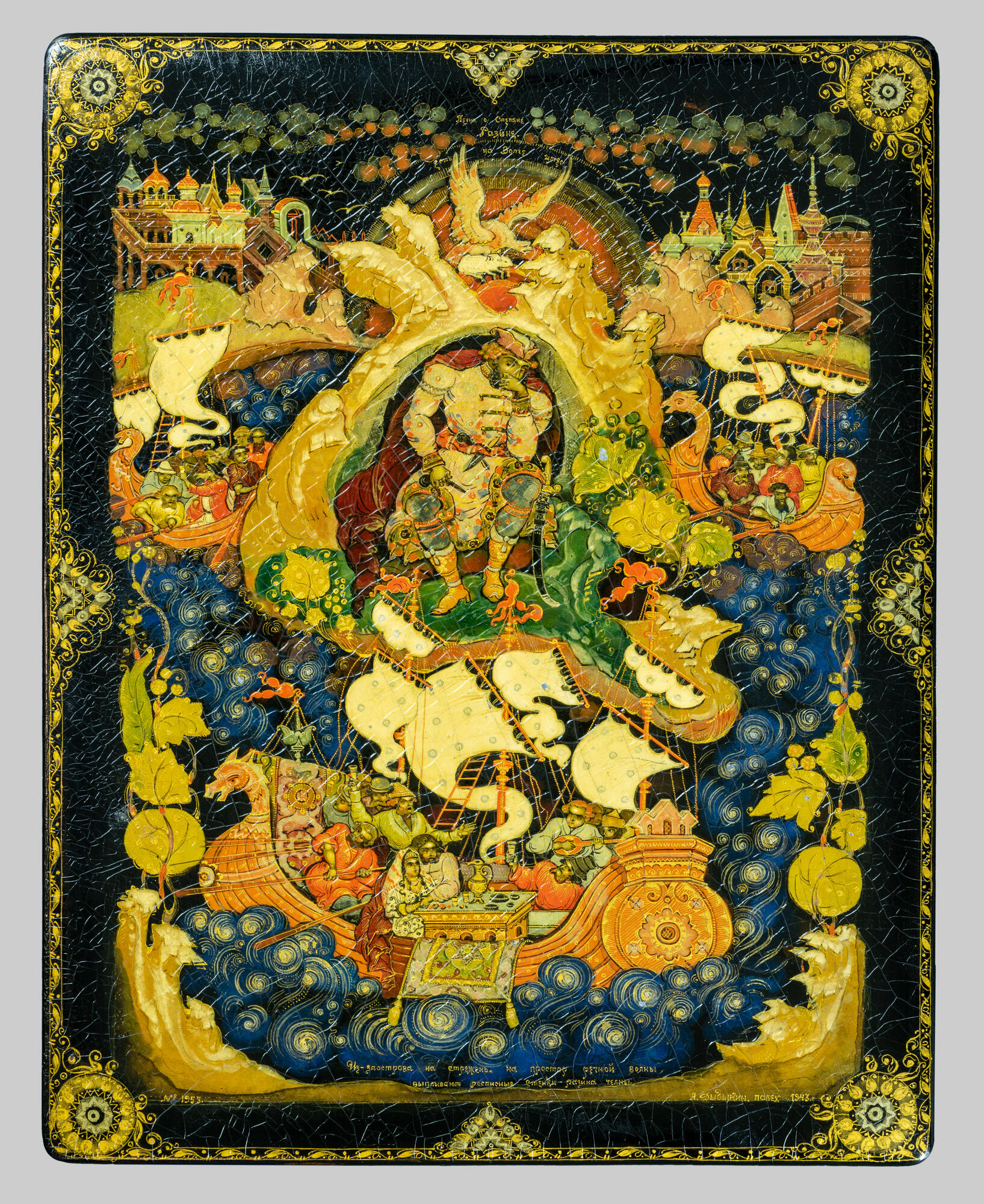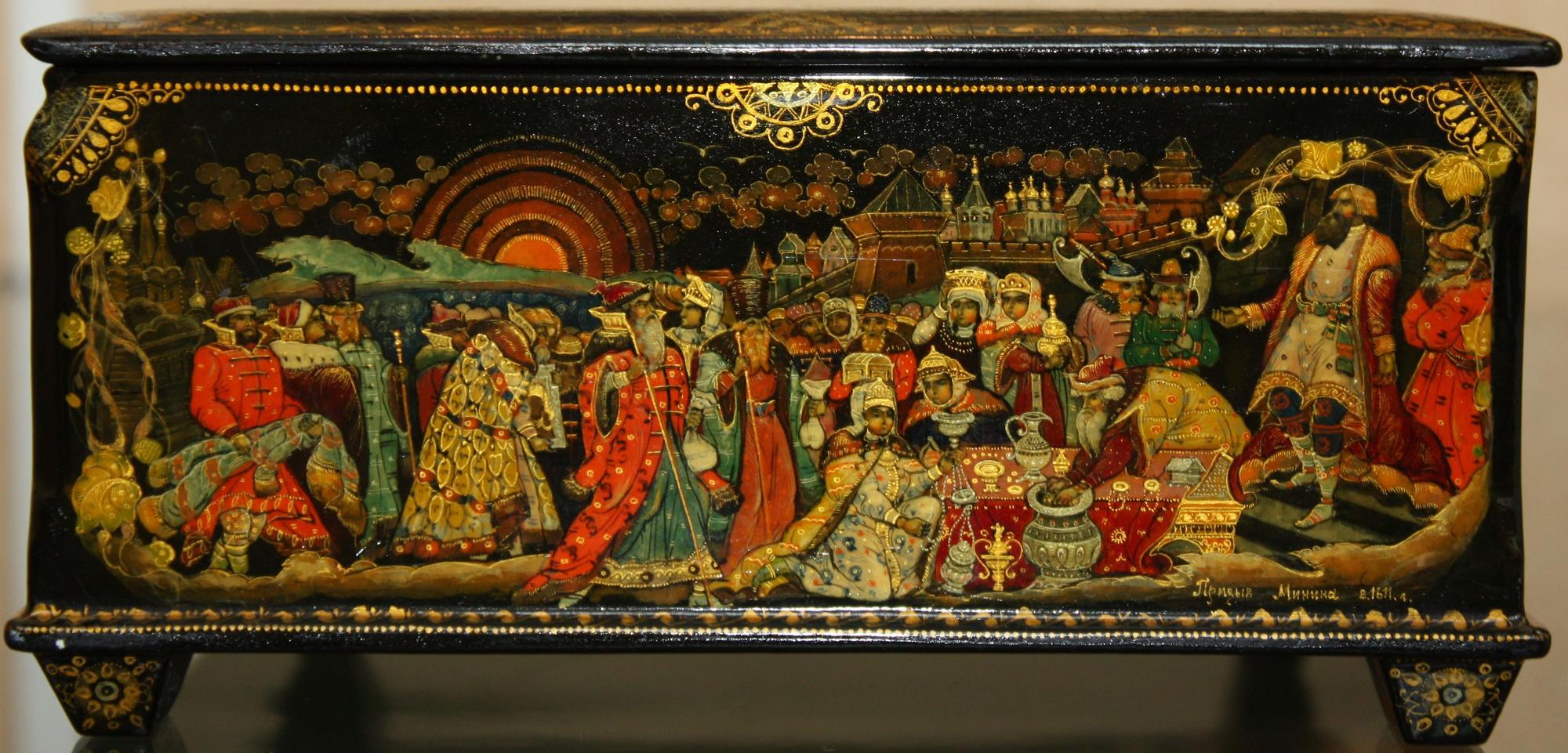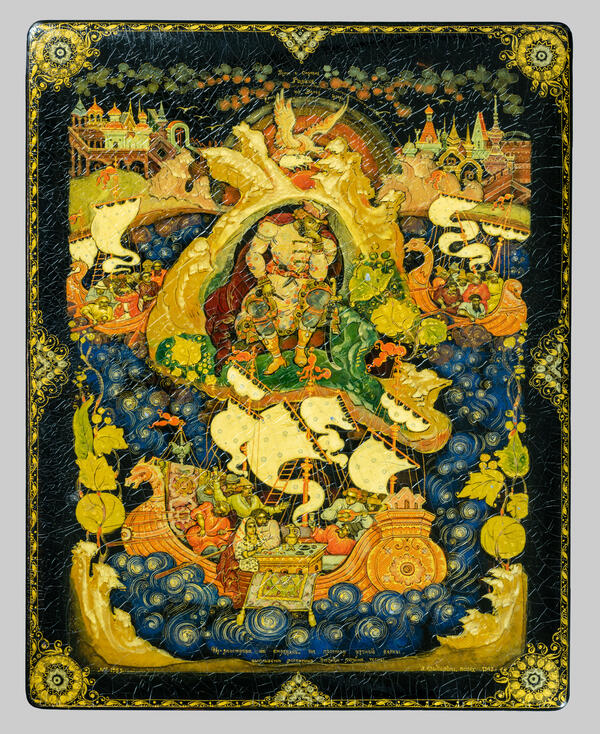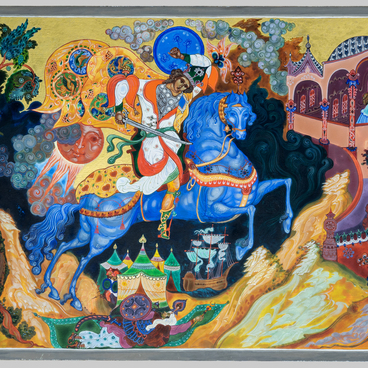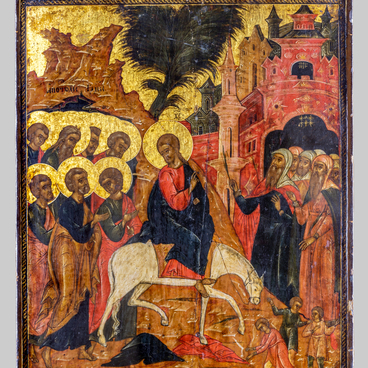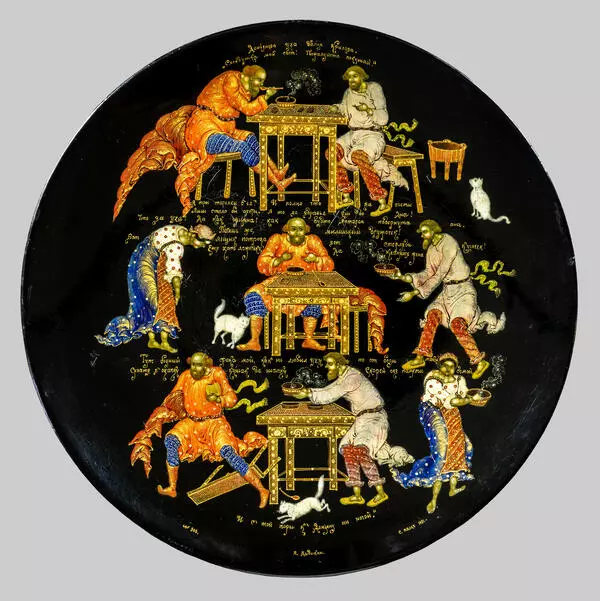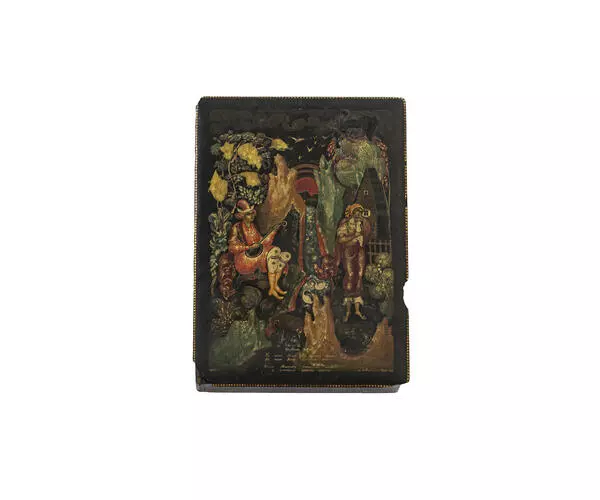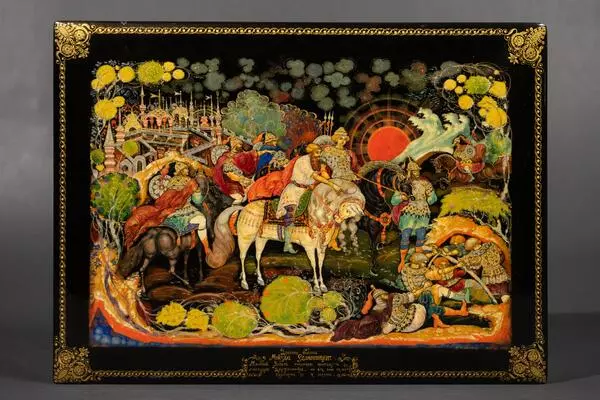Aristarkh Dydykin painten his lacquer miniature ‘Volga, the Russian River’ in 1943. He created a majestic image of the river which has always been glorified and called ‘Mother Volga’ in Russia.
The plot he created is based on songs about Stepan Razin, the legendary ataman. On the lid of the casket, the artist created a complex composition that combined episodes from the songs ‘From behind the island to Strezhen’ and ‘There is a cliff on the Volga.’
Below, he depicted a scene from the former song. It retells the premise of the song to a 't': ‘From behind the island to Strezhen, on the expanse of the river wave, painted sharp-breasted boats are floating. On the first, there Stenka Razin: he sits with the princess, embracing her; he is celebrating the new wedding merry and drunk. "
In the center, there is a different image of the ataman. Stepan Razin sits on a cliff alone, lost in thought. According to the plot of the song, this cliff was a dreadful and inaccessible place: ‘Nothing grows on its top, just the winds blowing free, but the mighty eagle has created its den there and torments its victims on it.’ The song says that only one person has ever set foot on that cliff: Stepan Razin. He spent a night there once, plotting his great deeds while sitting atop the cliff.
Aristarkh Dydykin did not show the hero as the dashing chieftain (or ataman) of a gang of robbers, like most other Palekh works depicted him. Instead, he created an image of the people’s leader, the embodiment of the mighty force, willpower, and victorious intent.
The artist did not limit the scope of his artwork to the story of Stepan Razin alone. Volga is the main river of Russia, which appears in many narratives, which are either told as stories or performed as songs. Which is why other characters are depicted on the walls of the object. On the front, there is the vibrant image of Kuzma Minin who calls upon the people to protect Moscow. On the left side, there are the barge haulers dragging the ships. On the rear wall, there is Maxim Gorky against the backdrop of the Volga river, holding an open book. On the right, a saddened young woman is sitting by the water: this is a scene from an ancient Russian song that goes “Oh river Volga, you”re so deep; I bring my ennui to you.”
Aristarkh Dydykin was working on this casket during the harsh period of the war. There is no soft humor here, which is common throughout his other artworks. This miniature is full of powerful and meaningful imagery. The artist portrayed people in an enlarged scale. He put the composition together with saturated color spots and boldly rounded lines. The images from the songs gave the miniature a strong air of emotion.
Aristakh Dydykin’s art style is easily recognizable. He has a peculiar way of painting scenery: trees and grass are decoratively rounded on his miniatures. The artist also loved the lush, somewhat heavy forms of floral ornamentation, abundantly applying gold in gaps and patterns. He always preferred vivid colour schemes with strong prevalence of contrasting colours: pink, green, purple, yellow, cherry red, and ocher. But they were never ‘local’ colours without admixtures: the artist created rather complex hues, mixing and fusing opposite colors.
The plot he created is based on songs about Stepan Razin, the legendary ataman. On the lid of the casket, the artist created a complex composition that combined episodes from the songs ‘From behind the island to Strezhen’ and ‘There is a cliff on the Volga.’
Below, he depicted a scene from the former song. It retells the premise of the song to a 't': ‘From behind the island to Strezhen, on the expanse of the river wave, painted sharp-breasted boats are floating. On the first, there Stenka Razin: he sits with the princess, embracing her; he is celebrating the new wedding merry and drunk. "
In the center, there is a different image of the ataman. Stepan Razin sits on a cliff alone, lost in thought. According to the plot of the song, this cliff was a dreadful and inaccessible place: ‘Nothing grows on its top, just the winds blowing free, but the mighty eagle has created its den there and torments its victims on it.’ The song says that only one person has ever set foot on that cliff: Stepan Razin. He spent a night there once, plotting his great deeds while sitting atop the cliff.
Aristarkh Dydykin did not show the hero as the dashing chieftain (or ataman) of a gang of robbers, like most other Palekh works depicted him. Instead, he created an image of the people’s leader, the embodiment of the mighty force, willpower, and victorious intent.
The artist did not limit the scope of his artwork to the story of Stepan Razin alone. Volga is the main river of Russia, which appears in many narratives, which are either told as stories or performed as songs. Which is why other characters are depicted on the walls of the object. On the front, there is the vibrant image of Kuzma Minin who calls upon the people to protect Moscow. On the left side, there are the barge haulers dragging the ships. On the rear wall, there is Maxim Gorky against the backdrop of the Volga river, holding an open book. On the right, a saddened young woman is sitting by the water: this is a scene from an ancient Russian song that goes “Oh river Volga, you”re so deep; I bring my ennui to you.”
Aristarkh Dydykin was working on this casket during the harsh period of the war. There is no soft humor here, which is common throughout his other artworks. This miniature is full of powerful and meaningful imagery. The artist portrayed people in an enlarged scale. He put the composition together with saturated color spots and boldly rounded lines. The images from the songs gave the miniature a strong air of emotion.
Aristakh Dydykin’s art style is easily recognizable. He has a peculiar way of painting scenery: trees and grass are decoratively rounded on his miniatures. The artist also loved the lush, somewhat heavy forms of floral ornamentation, abundantly applying gold in gaps and patterns. He always preferred vivid colour schemes with strong prevalence of contrasting colours: pink, green, purple, yellow, cherry red, and ocher. But they were never ‘local’ colours without admixtures: the artist created rather complex hues, mixing and fusing opposite colors.
